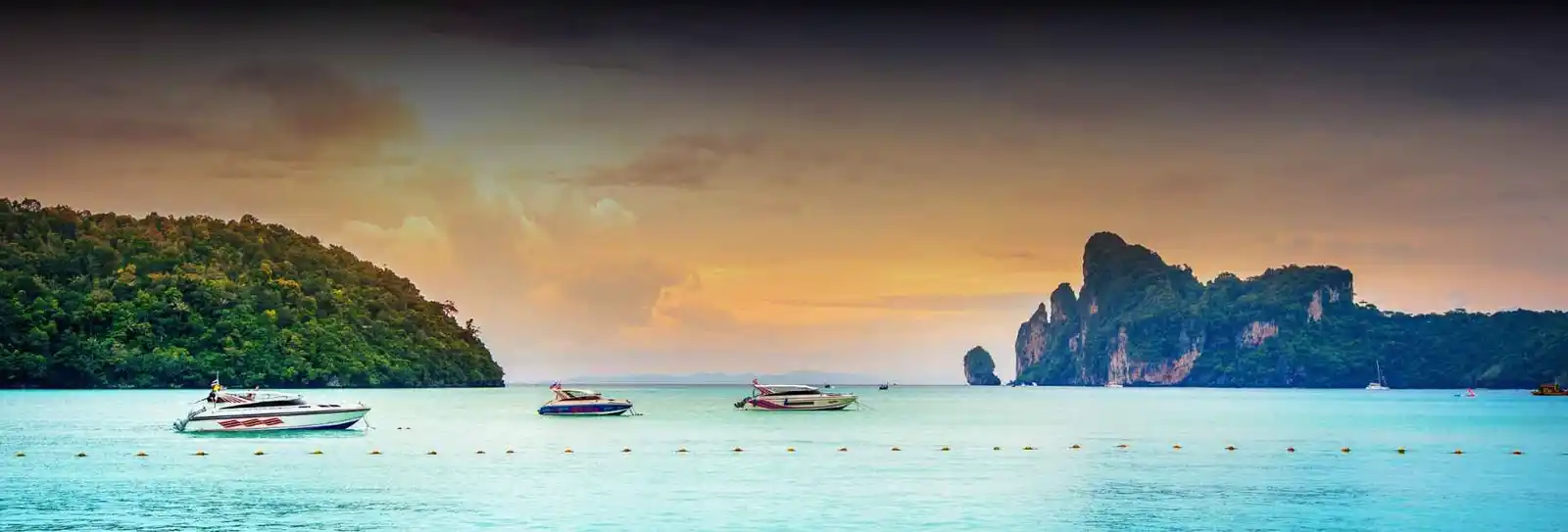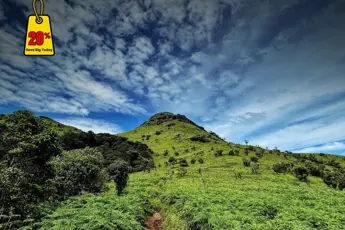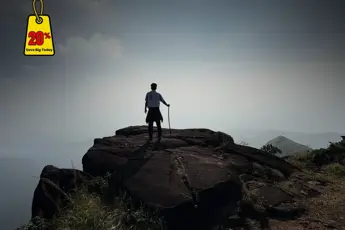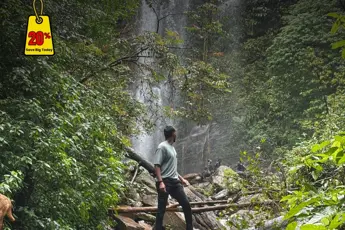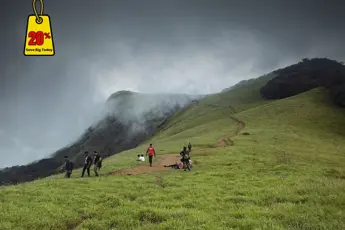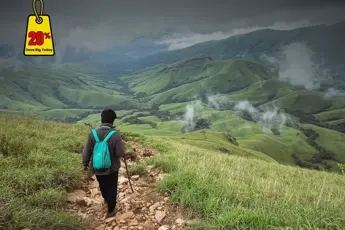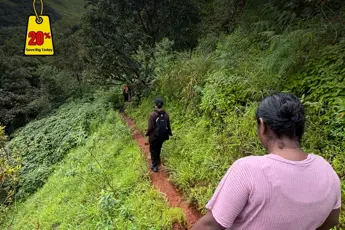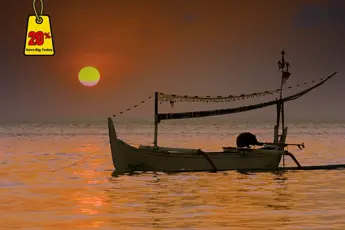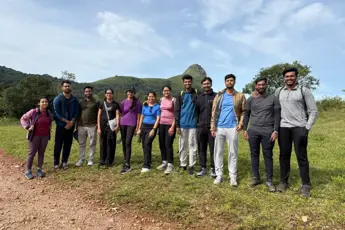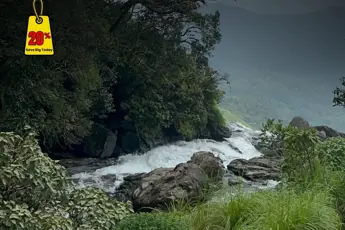
Some tribes had settled in the region of Kudremukh before the British conquest and the system of proper government. All of them, in one way or the other, have added to the cultural and historical input that characterises the area today. The Western Ghats, where the Kudremukh lies, have long been an important cultural region to the natives. The earliest settlers were believed to be the native Siddi and Gond tribes in the dense forest region. The Siddi tribe, which is said to have an African origin, was brought here by the Portuguese coloniser. They settled within the Western Ghats region of India and became a vital component of the Indian culture. Even today, they can be seen in the Kudremukh region. They live in harmony with their surroundings, subsist off the forest for sustenance, and follow long-held customs that are all land-based.Generally, these tribes had few interactions with other regions or authorities since such natives respected the native environment by living by its cycle of time. However, through colonisation, more so by the British, in due course, the influences of changes outside also entered into such indigenous tribes. This was the transition phase for the Western Ghats as they were transitioning from British rule. The land was biodiverse, which brought a point of interest for the British authorities and colonisation for commercial purposes. In this regard, the Western Ghats began by opening a plantation for tea, coffee, cardamom, etc., clearing the forests that have affected not only its natural habitat but also its native tribes. Colonial influence gathered momentum only at the end of the 19th century. The British also sought to explore the rich mineral resources available in the area. Iron ore was among those minerals; thus, it was after this exploration into the region's mineral wealth that it became imperative to look at finding iron ore deposits for the hill. All this eventually culminated in industrialisation.Kudremukh Today: A Protected SiteIt is no longer a mining area; it is now a national park and wildlife sanctuary. Kudremukh National Park is located in the Western Ghats. It is the habitat of tigers, leopards, elephants, and the Malabar Hornbill. The flora here consists of tropical evergreen forests, grasslands, and wetlands. It is an important area of conservation in southern India.Recognition of the area as an eco-tourism destination is coming through as trekkers, nature lovers, and wildlife enthusiasts visit the place to explore the area for natural beauty. This brings about the trek, one of the very popular treks that makes trekkers go toward the summit of the Peak, which commands an amazing view of all the mountains, forests, and valleys around it. The tourists are taken through lush forests behind streams and waterfalls. They go up to the summit, where they can savour the scenic views of the Western Ghats. Even though tourism has picked up its pace, the government hasn't allowed the place to be exploited in the literal sense. Only a few hundred trekkers have been allowed in the past year in this park, which is showing a learning of eco-friendly practices.Best Time To VisitThe ideal period for a visit to the hill is during winter, which falls between October and February. The climate is suitable during these months, so the temperature ranges from 12°C to 25°C. It is suitable for trekking and any outdoor activities as the temperature cools and the sky becomes clear, making it perfect for trekkers who wish to enjoy the marvellous and wonderful views of the Western Ghats. The winter months are also a good time for viewing wildlife, as the fauna is more active in the relatively cooler climate.The monsoon season is between June and September. Thus, yet another beautiful aspect of the hill occurs during the same time in the landscape when waterfalls like Hanumana Gundi are at their peak strength. The heavy rain prevents the trails from being walked and explored as the ground can get slippery, which becomes precarious. In addition, heavy mist reduces visibility, thus affecting views and photography.Summer (March to May) is relatively warm, between 20°C and 35°C. Although less crowded, the high temperature makes trekking a bit more difficult, especially for long treks. The summers are still okay for trekking if it is taken early in the day and with adequate hydration.👉 Looking for a thrilling monsoon trek near Bangalore? Don’t miss the chance to experience the Kudremukh Trek with Escape2Explore. This guided adventure offers scenic trails, an ancient fort, and breathtaking sunrise views — perfect for weekend getaways and nature lovers.Places Near Kudremukh:Sringeri (About 75 km): Sringeri is on the banks of the River Tunga and dates back a lot earlier; Sharada Peetham was founded by Adi Shankaracharya. There is a lot of greenery here, and it will become the ideal destination for a quiet retreat or nature walk. This place will have more biodiversity with the addition of the Sringeri Wildlife Sanctuary.Horanadu 60 km: Horanadu has earned the name for Annapoorneshwari Temple, one of the pilgrimage centres of the food goddess. The town is set amidst the scenic Western Ghats and serene surroundings that can be an apt abode for the spiritual peace-seeker and nature lovers.Agumbe (about 85 km): Agumbe is famously known as the "Cherrapunji of the South" with heavy rainfall, lush rainforests, and glorious sunsets. The Agumbe Rainforest Research Station is a hub for biodiversity studies, and the Sunset Point provides wonderful sunset views of the Western Ghats.Sakleshpur (Approx. 95 Km): This hill station of the Western Ghats is quite popular for the coffee plantations, dense forests, and attractive valleys. One should just witness the natural beauty and the historical importance of Bisle Ghat and Manjarabad Fort. The cool climate and green everywhere make this destination an excellent trekking and walking nature escapade.Karkala (About 85 km): Karkala is renowned for historical Jain temples like the towering monumental Bahubali Statue that pays tribute to Lord Gomateshwara. Is Chaturmukha Basadi surrounded by the side of silent hills and forests for nature and culture lovers.Udupi (Approx. 95 km): Udupi is a seacoast town and also one of the most popular centers in India for pilgrims because of Sri Krishna Temple. The town is also a haven due to beaches like Malpe Beach and St. Mary's Island, where tourists lie down basking in the coastal air. Food culture is also a major reason to visit this town among foodies.Bantwal (Approx. 90 km): Bantwal is a very quiet city that provides not only the beauty of nature but also has cultural landmarks. Of those, the most famous is the Maha Ganapati Temple. Bantwal, with rivers and greeneries, is an ideal location for a peaceful sojourn, which is away from the crowd.Mangalore (Approx. 100 km): Mangalore is a seaport town with historical temples, churches, and scenic beaches. Kadri Manjunath Temple, St. Aloysius Chapel, and Tannirbhavi Beach are some of the better-known attractions. It is also one of the entry points to the Western Ghats: innumerable attractions crowd these mountains, from landmarks of historical interest to a coast that, in its modest way, is beautiful.Kudremukh National Park: The place is perfect for trekking and for being a wildlife enthusiast. It has a varied flora and fauna of tigers, leopards, and elephants in the park. It is one of the best treks, and this place becomes heaven for nature lovers as it has thick forests and rivers around it.Jomlu Theertha Falls (approximately 60 km): Located near the hill, Jomlu Theertha is a pretty waterfall that exists in the silent forest. It is not very commercialised and provides a secluded experience. The trek of short length is laden with green, and it remains the best destination among those who would like to spend time on nature walks and photography.Hanumana Gundi Falls (Approx. 30 km): Hanumana Gundi Falls is an excellent waterfall within the limits of Kudremukh National Park, well covered with forests. This is a great trekking location and an experience of scenic beauty. The falls appear more gorgeous in the rainy season when the water current peaks.Mullayanagiri (approximately 95 km): Mullayanagiri, the highest peak of Karnataka, is in Chikmagalur. The view from the place is scintillating, with beautiful hills and valleys. This is the hottest place among adventure seekers; another similar place close to this place is Baba Budangiri. This place is not only scenic but also historically important.Hebbe Falls (Approx. 90 km): Hebbe Falls is one of the closest beautiful waterfalls from Chikmagalur, hidden deep in the coffee plantation. A perfect place to take an excursion for a day amidst natural splendour. Richly populated with lush flora and verdant coffee estates on one's way to the track for the fallsBaba Budangiri (About 90 km): Baba Budangiri is Chikmagalur's historical and spiritual hill station. It is a way of memorialising a Sufi saint in the form of the Dargah on top of the hill. This place is perfect for trekking because of its great view. Apart from this, it is incidentally a religious centre for Hindus and Muslims.Kemmangundi (Approx. 85 km): The cool climatic hill station, Kemmangundi, is a place that attracts tourists destination people from the Chikmagalur district. The view from the top of the Z Point is very good, and it offers a chance to visit the hills and valleys surrounding it. Raj Bhavan, a guesthouse built by the Britishers, is another attraction here. It is an ideal spot for those who love to be in forests with waterfalls and coffee plantations all around.AccommodationsIt has accommodations suited to all budgets and tastes. For those who seek to get closer to nature, camping packages are on offer, and visitors can pitch tents in the forests or stay at base camps close to trekking trails. The package is more adventurous, and it includes a tramp with meals cooked over the campfire and the possibility to experience the wild on one's face.Many eco-friendly resorts and guesthouses have developed in and around the hill. One can stay comfortable amidst nature with cosy rooms, hot water, and other basic facilities. Most such places encourage sustainability through the use of local resources and the development of responsible tourism. Here, the food prepared is made from locally sourced ingredients and bird watching, nature walks, and cultural performances can be undertaken with the host's assistance.Transportation and TravelMost of the travel packages to Kudremukh are private or group transport, depending on the number of travellers. Time from cities like Mangalore, Chikmagalur, and Bangalore will take 4 to 6 hours, depending on the route. For group tours, always buses or vans are used, but for private tour packages, one can always make it more personalised, wherein taxis or hired vehicles are used.Except for road travel, all the travel agencies have package tours by train and bus to the nearest railway or the local bus station, offering pick-up and drop services. They offer them to one and all under varying budgets since both of these guarantee ease and comfort at the same time.Trekking In Kudremukh:1. Trekking Tour SummaryThe elevation of Kudremukh Peak is 1,894 meters or 6,214 feet, and the third-highest in Karnataka. Walking through dense forests, steep climbs, grasslands, and streams to the summit makes it exhilarating and challenging. It's a climb, and not for the faint of heart, quite steep and steeper than most, with tough trails, and the weather is pretty unpredictable, but beginners who are in good physical fitness can try this.2. Duration and Difficulty of TrekIt takes nearly two days to complete the trek, which most groups take. A full-fledged trek is usually made in the early morning, begins its voyage from the base, and peaks by the middle of the afternoon or the evening, depending on its speed. Nearly every person is inclined to do the camping close to the base or other nearby camps to complete the trek within 2 days. Only due to the hard terrain and long, tiresome hills can Kudremukh Trek be said to be moderate to difficult.3. Best Time for TrekThe best time to undertake treks is between October and February, when cool and pleasant weather prevails, which is ideal for trekking, and the trails do not get slippery like those in the rainy season. The monsoon, from June to September, brings heavy rain, makes the trail slippery, and the place becomes misty, making visibility poor. But with the monsoons come out lush greenery, waterfalls, and colourful flowers that may attract only experienced trekkers prepared for such conditions.4. Commencement point of the trekThe trek to peak usually begins from a small village, Muddebele, which is adopted as a base. From here, trekkers start their trek, hiking through thick forests full of giant trees and a wide variety of wildlife for some time before the gentle rise of several grasslands, streams, and water bodies. Marked well, it goes through dense forests and diverse wildlife, so trekking with the guidance of an experienced tour guide is necessary.5. Highlights of the TrekThe best thing is the scenic view that can be relished while ascending during the Trek. You get to see all the Western Ghats from the top to the valley. As you climb up to the top, you get to enjoy a wide range of green valleys and distant peaks. Truly breathtaking if seen at sunrise or sunset.Flora and Fauna: The trek takes one through a mix of tropical evergreen forests, shola grasslands, and forested slopes, replete with a wide variety of flora and fauna. Several species of birds, butterflies, and animals like tigers, leopards, wild boars, and elephants have been spotted by lucky trekkers. Medicinal plants are also in abundance, and trees vary uniquely.Waterfalls: There are many waterfalls on the trek route, one of them being Hanumana Gundi Falls. The gushing of water down the rocks makes the trek quite refreshing and soothing. It is a great place to rest and enjoy the beauty.Dense Forests and Grasslands: You can view wildlife and enjoy cool shade while passing through dense forests. The trail opens to vast grasslands as you get near the summit, giving views of the surrounding hills.Kudremukh Trek RouteFrom Mudbele village, they trek over to forest trails, crossing many streams and waterfalls before reaching the viewpoint. This is an excellent place for resting as it has a view around.The grasslands: The route takes an upward course on the grasslands, which is described as an area of minimal trees and great views into the country beyond. The area is much steeper and becomes harder as trekkers continue up.Summit: It is quite exhausting because the final stretch to the summit is steep, but it is worth the trouble. From the top, 360-degree views of all the valleys and mountain ranges surround you. From this point, the Peak view is something special.Return journey: The return journey is much faster but has to be done very cautiously because of the steepness of the slopes. Most trekkers get back the same day or camp close to the bottom and return early the following day.How to Reach:By Air: The Nearest airport is Mangalore International Airport, 100 km away from the hill. You can hire a taxi or take your vehicle from the airport to reach Muddebele, which is the base village of the trek, which takes around 3-4 hours. For those coming to Bangalore (330km away), you can opt for a flight and then take your vehicle to drive for 6-7 hours.By Train: The Nearest Railway Station is Mangalore Junction, which has good connectivity with other important cities such as Bangalore and Mumbai. Taxis or buses are available from there to Muddebele. Or one can go up to Chikmagalur 95 km, or by train up to Shimoga by taxi or bus to the base.By Road: You can drive right from Bangalore (330 km), Mangalore (100 km), or Chikmagalur (95 km) to Muddebele through well-tarred highways. The best way to get there is by private vehicles and taxis. There are also local buses, but it's a less comfortable option for people with a tight budget.ConclusionThe trek is more about knowing the journey than conquering the peaks because it speaks of relating to nature at its purest with other trekkers as companions and making memories for a lifetime. The formations in the backdrop stretched the arms of grandeur towards the sky; the sunrise soaked in with friends, or amidst the stillness imparted by walking around naked, all add to the adventure, one can't resist adding their little tale to.So, bundle your travel requirements, lace your shoes, and walk towards the wonderment of Kukremukh. Not that it's any trek, but it's an event in honour of life, nature, and adventure! Happy trekking!Why Book with escape2exploreWhen exploring the Kudremukh trek from Bangalore and beyond, escape2explore stands out as a trusted name in adventure and experiential travel. Here’s why hundreds of travellers choose us for their getaways:Trusted, Well-Reviewed Local Operator: escape2explore has gained the trust of thousands of content tourists all over India. With persistent positive feedback and an unblemished reputation for delivering quality experiences, we assure your experience to be hassle-free, memorable, and value-packed. Our insider local knowledge guarantees that you to always be in safe hands.Seasoned Guides: Our trips are led by friendly, trained, and professional guides who are passionate about the outdoors and your safety. Whether it's a beach trek, a cultural tour, or a spiritual walk through temples, our team knows the terrain, the stories, and how to make each moment count.Safe & Curated Itineraries: Your safety is our number one priority. Each of our tour packages is thoughtfully crafted with safety measures, researched accommodations, and easy travel arrangements. We take care of the details so you can have the experience hassle-free and worry-free.Unique Experience That You Won't Find Anywhere Else: With escape2explore, you discover more than the tourist attractions. We go off the beaten track with hidden beaches, unusual treks, offbeat cultural destinations, and true interactions. Whether camping out beneath the stars or exploring a hidden beach cove, we present to you the other side of Kudremukh that not many get to encounter.Read: Bavikonda|Hampi|Kodaikanal|Wayanad|Tadianamol


